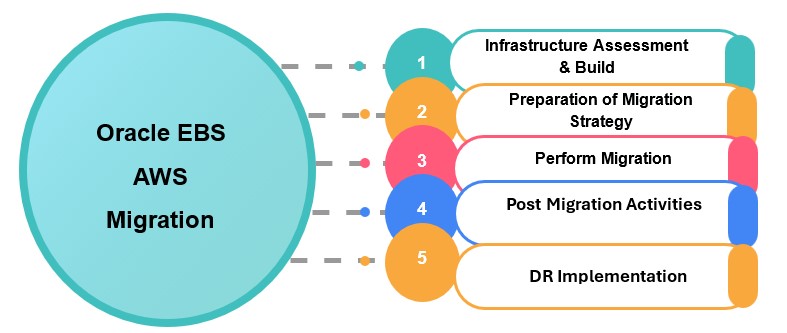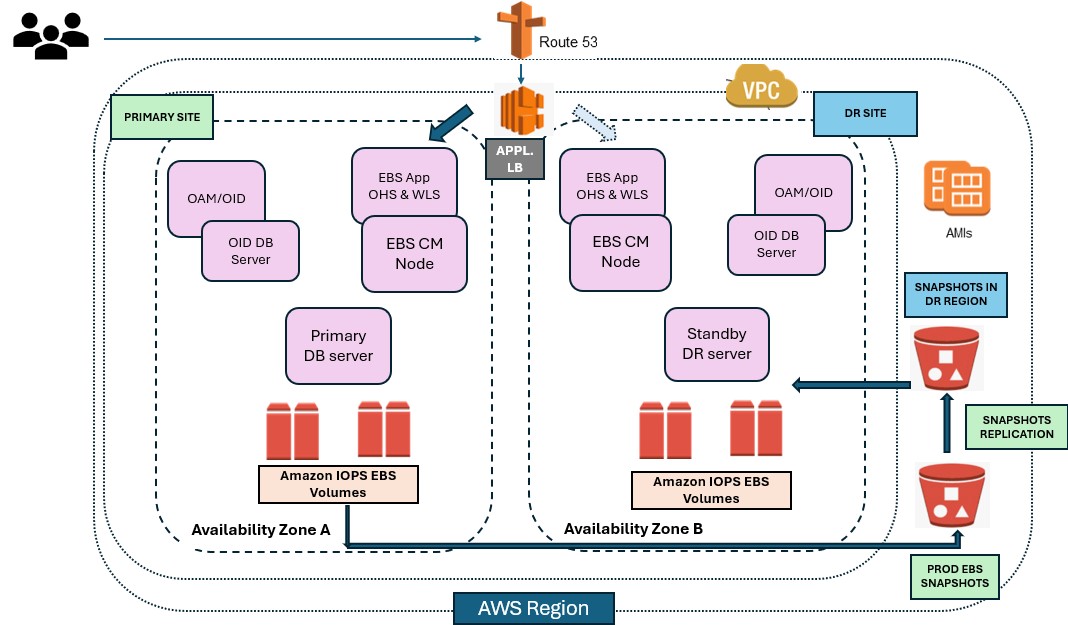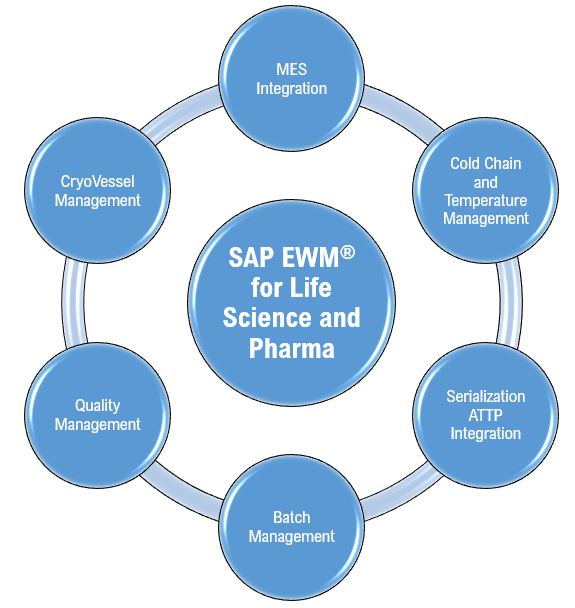Beyond the Buzzwords: Why Corporate Values and IT Budgets Need a Reality Check
Traditional organizational models, built for stability, are now hindering enterprise innovation and agility in an era of rapid transformation. Words like “Integrity” and “Innovation” often appear on walls and websites yet have little impact on daily decision-making. Despite global IT spending projected to soar to $5.7 trillion by 2025, companies remain stuck in a financial paradox allocating most of their budgets to maintaining outdated systems instead of fueling future-focused innovation. To stay competitive in today’s fast-evolving digital landscape, businesses must rethink their IT investment strategies, break free from legacy constraints, and embrace infrastructure modernization as the foundation for true digital transformation.
In this blog, we will explore the success story of one of such customers who, initially daunted by the complexities of cloud adoption, navigated challenges and unlocked remarkable business outcomes through a strategic cloud transformation journey.
The Cloud Transformation Journey of one of our clients
Our customer is a British multinational company, founded in 1993 has revolutionized the world of scientific, technical, and medical analytics by offering decision-making tools and legal insights while orchestrating global exhibitions. With a footprint across 40 countries, their Oracle ERP application serves a vast network of 8,000 plus users worldwide, requiring uninterrupted access across multiple locations. However, as the company’s global presence expanded, business demands surged, making efficiency and scalability increasingly challenging. This rapid growth led to operational hurdles, including:
- Latency Issues Across Geographies: With users spread across multiple time zones, inconsistent response times began affecting productivity.
- Infrastructure Bottlenecks: Existing systems struggled to handle peak loads, leading to performance degradation and operational inefficiencies.
- Disaster Recovery and Business Continuity Risks: A growing user base heightened the need for resilient failover mechanisms to ensure uninterrupted service.
- High Maintenance Costs: Managing and upgrading private infrastructure requires significant investment in hardware, software, and skilled personnel.
To tackle these challenges, the customer sought to collaborate with a renowned global technology leader, leveraging their expertise in cutting-edge cloud solutions. Through this strategic partnership, the company aimed to select the right cloud vendor to modernize and optimize its infrastructure with a seamless cloud migration enhancing scalability, cost efficiency, and uninterrupted business operations.
The primary objective was to decommission the on-premises data center by the end of 2017 and migrate their workloads such as EBS R12.1.3 applications and 12c databases, along with Single Sign-On OID 11.1.9 and OAM 11gR2 to a cloud-based environment before the next Infrastructure renewal scheduled in early 2018.
Empowering Enterprises: How Infosys Leads Cloud Evolution
1. Understanding the Migration Landscape & customer portfolio:
Cloud migration requires meticulous planning, particularly when managing ERP workloads like Oracle EBS R12. Infosys streamlines transitions by guiding clients in selecting the right cloud provider, risk mitigation, and long-term strategy. As part of the initial assessment, Infosys conducted detailed evaluation of on-premises workloads as below to identify landscape complexities and key pain points.
- Application & Database Scope: Number of databases and applications planned for migration.
- Database Size: Total Database size and growth from past 3 years.
- Oracle EBS R12 Architecture: Number of AP tier & RAC or Non-RAC database model.
- Current Backup Strategy: Current backup type, frequency, tools used, and retention policies.
- Disaster Recovery Plan: Review the current DR plan to ensure business continuity post-migration.
- Current Monitoring: Existing monitoring mechanisms, alerts configured, SLAs & response time.
- Future Upgrade Plans: Know if there are any planned upgrades for Oracle EBS near future.
- Third-Party Integrations: Identify existing third-party integrations with Oracle EBS applications to ensure compatibility.
- License & Support Information: Evaluate current Oracle licensing agreements and support contracts for compliance and cost optimization.
- Project Timelines: Customer expectations on complete migration process.
- On-Premises Infrastructure Renewal: Review data center renewal cycles, licensing agreements, and upcoming expirations to align with migration planning.
- Current Performance Load & Resource Utilization: Analyze CPU, RAM, and server utilization metrics to determine existing performance bottlenecks and ensure proper capacity planning for cloud deployment.
2. Choosing the Right Cloud Provider:
Customers believe that Oracle Cloud is the appropriate choice for running Oracle workloads, but it may not always be the best fit. Many Oracle customers turn to AWS, Azure, or Google Cloud for architectural flexibility, cost optimization, and broader service capabilities.
For this customer, after thorough evaluation of the data gathered during assessment phase, Infosys determined that migrating the Oracle E-Business Suite from on-premises to AWS Cloud would be the best fit to optimize infrastructure, improve operational efficiency, and deliver substantial long-term cost savings. The key AWS offerings that can benefit this customer are:
- Lower Licensing Costs: BYOL (Bring Your Own License) allows us to leverage existing Oracle licenses instead of purchasing new ones, avoiding unnecessary costs.
- Pay-as-you-go pricing model: Allows businesses to only pay for the resources they consume.
- AWS License Manager: To track, manage, and optimize Oracle licenses to prevent unnecessary costs.
- Reserved Instances and Savings Plans: Commit to long-term usage to avail up to 72% discounts on AWS EC2 running Oracle workloads by opting for extended commitment periods.
- Rapid Migration: Lift and Shift (Re-hosting) ensures a fast transition without requiring major application re-architecture, reducing downtime.
- Flexible Instance Selection: Efficient vCPU allocation for Amazon EC2 & RDS, reducing unnecessary infrastructure overhead by leveraging advanced Amazon features such as Provisioned PIOPS and AWS Snapshot backups.
- Scalability & Performance: Enables dynamic resource scaling, delivering high-performance compute and storage optimized for mission-critical Oracle EBS applications on Amazon EC2 and RDS, ensuring seamless operations and responsiveness.
- Vast global network of data centers: Allowing businesses to deploy services closer to customers in multiple regions, improving accessibility and performance worldwide.
3. Strategic Partnership Secured: Customer Approves Infosys Proposal:
After a thorough evaluation, the customer was highly impressed with Infosys’ proposals and strategic project planning, leading to their selection as the preferred partner for the cloud transformation initiative. Key Levers for Gaining Customer Confidence:
A) Optimized Infrastructure Strategy for Maximum Cost Savings:
- Eliminate the complexity of a 3-node Oracle RAC by leveraging Amazon Provisioned IOPS (PIOPS) on Amazon Ec2 instances.
- Multi-node application tires to a single-node setup with efficient vCPU allocation, ensuring stable and consistent performance.
- Reduce licensing costs by eliminating the need for a standby database instance by leveraging Amazon EBS volume snapshot.
B) Enhancing Project Management Excellence:
- Strategic Cost Optimization: A curated bill of materials for proactive TCO assessment.
- Accelerated Project Timelines: With the upcoming infrastructure renewal, an optimized plan of six months of execution followed by one month of hypercare was prepared to ensure seamless implementation and maximum efficiency.
- Clear Accountability Framework: Defined RACI roles to enhance decision-making and ownership.
- Efficient Budget Management: Cost-effective resource allocation to minimize unnecessary expenses.
4. Structured Approach to Project Execution:
Ensuring seamless connectivity and optimizing performance for such a distributed user base is no small feat. This project presented an exciting challenge building a resilient infrastructure that could support diverse workloads while maintaining security, speed, and reliability. The various stages of Oracle EBS migration are illustrated as below:

A) Infrastructure Assessment and Build:
The Key AWS Architecture components analyzed & configured prior to migration are as follows:
- Amazon EC2-EBS: Recommendation of Amazon EC2 instances for hosting Oracle R12 Applications to gain direct file system access.
- Amazon RDS: Amazon RDS instance for Single Sign-On OID 11.1.1.9 and OAM 11gR2 Database on and integrated with EBS R12 in SSL mode.
- AWS Connectivity: AWS Direct connect or VPN to ensure hybrid and secure connectivity between on-Premises to AWS cloud.
- Multiple Availability Zone Deployment: Multiple Availability Zones for facilitating hands-free database maintenance and recovery.
- AWS Elastic Load Balancer: AWS Elastic load balancer to distribute incoming traffic across multiple EBS application tier instances.
- Amazon S3 Storage: Amazon S3 for storing Oracle RMAN backups.
- Amazon Provisioned IOPS (PIOPS) for Oracle EBS: To deliver high-performance storage with consistent IOPS, enabling intensive read/write operations on AWS EC2 instances while minimizing latency, and enhancing database performance through improved I/O throughput.
- AWS Snapshots: AWS snapshots for incremental, point-in-time backups for EBS volumes, ensuring cost-efficient recovery, migration, and disaster resilience.
B) Preparation of Migration Strategy:
- Lift-and-shift: Since the source and target cloud platforms are the same, majorly focused on Lift-and-Shift or Re-platforming migration approach.
- Migration Tools: Since the client’s Oracle license does not support Oracle Data Guard, the migration of Oracle E-Business Suite (EBS) to Amazon EC2 was planned using Oracle RMAN backup-based duplication and filesystem synchronization.
C) Perform Migration:
- Ship DB binaries from source to target EC2 DB node.
- Restore the target DB from RMAN full backup.
- Ship EBS Filesystem to target EC2 AP node and perform post configuration steps.
- Install Single Sign OID 11.1.1.9, OAM 11gR2 & integrated with Oracle E-Business Suite in SSL mode.
- Conduct comprehensive technical and functional testing to validate system integrity post migration.
- Migrate EBS R12 customizations based on the identified gaps during test phases.
- Execute the cutover plan: Freezing on-premises changes, running a final incremental backup and applying it to AWS, validating data consistency, and executing a controlled DNS switch to redirect traffic to the AWS-hosted EBS.
D) Post Migration Activities:
- Load testing (OATS): Perform load testing to evaluate the performance, scalability, and reliability of Oracle EBS Applications by leveraging OATS tool.
- Performance Assessment: Generated and analyzed Oracle’s Automatic Workload Repository (AWR) reports periodically to assess performance post AWS migration.
- Monitoring setup: Installed & configure Oracle Enterprise Manager (OEM) 13.2 to monitor the Oracle E-Business Suite database and applications for proactive alert management.
- Oracle E-Business Suite Workflow Notification Mailer: Configured Microsoft Office 365 (IMAP with SSL) for secure and efficient email notifications.
- Automated Cloning Solution: Automated cloning tool for creating Oracle E-Business Suite Non-PROD instances.

Oracle EBS R12 Architecture on AWS Cloud
E) DR Implementation:
Implementation of AWS EBS volume snapshots as an optimal and cost-effective disaster recovery solution ensuring minimal downtime and enables recovery across regions in the event of a disaster or hardware failure. The key benefits and features are as follows:
- Reliable and cost-effective method to back up production EBS volumes of EC2 instances.
- Snapshots are stored in Amazon S3 & redundantly maintained across multiple Availability Zones.
- Periodic full backup snapshots of the production instance.
- Frequent Synchronization of Database Archive Logs to ensure up-to-date recovery points.
- Additionally, cloning of non-production environments is performed using AWS snapshots.
Mission Accomplished: A Future-Ready IT Landscape
Infosys successfully executed the migration of the client’s on-premises Oracle workload to the AWS cloud, overcoming all challenges with precision. The transition was completed within six months, supported by comprehensive testing carried out by the client’s functional teams and various system integrator (SI) teams.
To ensure a smooth cutover, the migration window was meticulously optimized to minimize downtime. Additionally, a four-week Hypercare phase was implemented post-migration, ensuring all processes functioned seamlessly and reducing potential disruptions for end users.
This strategic transformation enabled the client to achieve long-term efficiency, scalability, and future readiness, delivering:
- Optimized IT infrastructure costs, maximizing resource utilization.
- Significant reduction in IT operational expenses, enhancing cost efficiency.
- Improved performance & security, strengthening system reliability.
- A robust disaster recovery solution, ensuring resilience and business continuity.
Key Takeaways from this Migration Journey:
- Oracle EBS R12 Database performance is significantly enhanced when provisioned on Amazon EBS Provisioned IOPS (PIOPS) storage.
- With optimal server design and strategic vCPU allocation, a multi-node application tier can be seamlessly transitioned to a single-node setup while maintaining peak performance.
- By implementing AWS EBS volume snapshots alongside archive log backups as a disaster recovery (DR) solution, organizations can achieve optimal Recovery Time Objective (RTO) and Recovery Point Objective (RPO).









